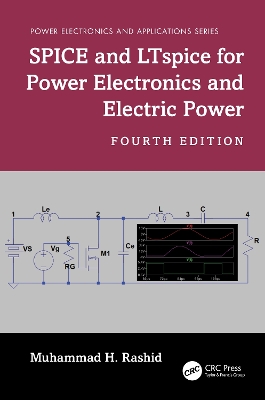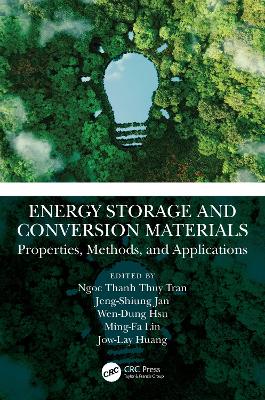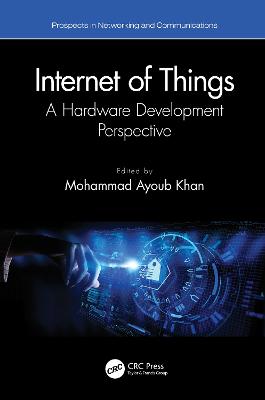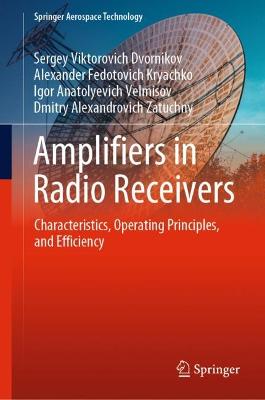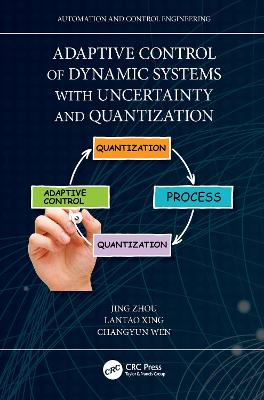Analog Circuit Design using Current-Mode Techniques
 portes grátis
portes grátis
Analog Circuit Design using Current-Mode Techniques
Maheshwari, Sudhanshu
Taylor & Francis Ltd
12/2024
176
Mole
9781032516134
Pré-lançamento - envio 15 a 20 dias após a sua edição
Descrição não disponível.
Chapter 1
SUBJECT INTRODUCTION
1.1 Signals
1.2 Processing of Signals
1.3 Components
1.4 Design Techniques
1.5 Circuit Parameters
1.6 Need of Current-mode
1.7 Summarized Conclusion
Chapter 2
CURRENT-MODE BLOCKS
2.1 Current Conveyor
2.2 Second generation Current Conveyor
2.3 Extra-X Current Conveyor
2.4 Differential Voltage Current Conveyor
2.5 Current Controlled Current Conveyors
2.6 Other Current-mode building blocks
2.7 IC Compatibility of blocks
2.8 Concluding remarks
Chapter 3
ANALOG INTERFACE AND AMPLIFIER CIRCUITS
3.1 Voltage buffer
3.2 Current buffer
3.3 Voltage to current converter
3.4 Current to voltage converter
3.5 Single ended voltage amplifiers
3.6 Single ended current amplifiers
3.7 Instrumentation amplifiers
3.8 Summing amplifiers
3.9 Further reading
Chapter 4
SINGLE TIME-CONSTANT CIRCUITS
4.1 Lossy and lossless Integrators
4.2 Lossy and lossless Differentiators
4.3 Active Phase-shifting networks
4.4 Electronically tuneable circuits
4.5 First order multifunction filter
4.6 IC realizations of circuits
4.7 Supplementary Reading
Chapter 5
HIGHER ORDER ANALOG FILTERS
5.1 Second order analog filters
5.2 Voltage mode CCII based filters
5.3 Second order current mode filters
5.4 Electronically tuneable filters
5.5 Voltage mode filters with high input impedance
5.6 Higher order filter design
5.7 Mixed mode filter circuits
5.8 Shadow filters
5.9 Summarized Conclusion
Chapter 6
NON-LINEAR APPLICATIONS
6.1 Comparators
6.2 Precision Rectifiers
6.3 Digital Modulators and detectors
6.4 Current mode Logic gates
6.5 Multiplier/Divider circuits
6.6 IC compatibility of non-linear circuits
6.7 Summarized Conclusion
Chapter 7
WAVEFORM GENERATION CIRCUITS
7.1 Topic Introduction
7.2 Oscillator Realization Methods
7.3 Quadrature Oscillator circuits
7.4 Multiphase oscillators
7.5 Electronically tuneable oscillator circuits
7.6 Circuits' realization using ICs
7.7 Applications in Communication circuits
7.8 Summarized Conclusion
Chapter 8
CONFIGURABLE ANALOG BLOCKS
8.1 The FPAA Concept
8.2 Need of configurable blocks
8.3 Current mode analog cells/block
8.4 Tuning of analog cells
8.5 IC compatibility aspects
8.6 SPICE results and Concluding remarks
Chapter 9
FUTURE OF ANALOG SYSTEMS
9.1 Challenges for mixed signal environment
9.2 Migration to Current-mode techniques: a novel case sudy
9.3 System Design using Current mode techniques
9.4 Research initiatives and future directions
9.5 Concluding Remarks
SUBJECT INTRODUCTION
1.1 Signals
1.2 Processing of Signals
1.3 Components
1.4 Design Techniques
1.5 Circuit Parameters
1.6 Need of Current-mode
1.7 Summarized Conclusion
Chapter 2
CURRENT-MODE BLOCKS
2.1 Current Conveyor
2.2 Second generation Current Conveyor
2.3 Extra-X Current Conveyor
2.4 Differential Voltage Current Conveyor
2.5 Current Controlled Current Conveyors
2.6 Other Current-mode building blocks
2.7 IC Compatibility of blocks
2.8 Concluding remarks
Chapter 3
ANALOG INTERFACE AND AMPLIFIER CIRCUITS
3.1 Voltage buffer
3.2 Current buffer
3.3 Voltage to current converter
3.4 Current to voltage converter
3.5 Single ended voltage amplifiers
3.6 Single ended current amplifiers
3.7 Instrumentation amplifiers
3.8 Summing amplifiers
3.9 Further reading
Chapter 4
SINGLE TIME-CONSTANT CIRCUITS
4.1 Lossy and lossless Integrators
4.2 Lossy and lossless Differentiators
4.3 Active Phase-shifting networks
4.4 Electronically tuneable circuits
4.5 First order multifunction filter
4.6 IC realizations of circuits
4.7 Supplementary Reading
Chapter 5
HIGHER ORDER ANALOG FILTERS
5.1 Second order analog filters
5.2 Voltage mode CCII based filters
5.3 Second order current mode filters
5.4 Electronically tuneable filters
5.5 Voltage mode filters with high input impedance
5.6 Higher order filter design
5.7 Mixed mode filter circuits
5.8 Shadow filters
5.9 Summarized Conclusion
Chapter 6
NON-LINEAR APPLICATIONS
6.1 Comparators
6.2 Precision Rectifiers
6.3 Digital Modulators and detectors
6.4 Current mode Logic gates
6.5 Multiplier/Divider circuits
6.6 IC compatibility of non-linear circuits
6.7 Summarized Conclusion
Chapter 7
WAVEFORM GENERATION CIRCUITS
7.1 Topic Introduction
7.2 Oscillator Realization Methods
7.3 Quadrature Oscillator circuits
7.4 Multiphase oscillators
7.5 Electronically tuneable oscillator circuits
7.6 Circuits' realization using ICs
7.7 Applications in Communication circuits
7.8 Summarized Conclusion
Chapter 8
CONFIGURABLE ANALOG BLOCKS
8.1 The FPAA Concept
8.2 Need of configurable blocks
8.3 Current mode analog cells/block
8.4 Tuning of analog cells
8.5 IC compatibility aspects
8.6 SPICE results and Concluding remarks
Chapter 9
FUTURE OF ANALOG SYSTEMS
9.1 Challenges for mixed signal environment
9.2 Migration to Current-mode techniques: a novel case sudy
9.3 System Design using Current mode techniques
9.4 Research initiatives and future directions
9.5 Concluding Remarks
Este título pertence ao(s) assunto(s) indicados(s). Para ver outros títulos clique no assunto desejado.
Amplifier Circuits;Waveform Generation Circuits;High Order Analog Filters;Single Time-Constant Circuits;Precision Rectifiers;Multiphase Oscillator;Current Conveyors;DVCC;Analog Circuit Design;Operational Transconductance Amplifiers;Voltage Transfer Gain;Current Mode Circuits;Voltage Transfer Function;Bias Currents;MOS Transistor;CCCII;Analog Signal Processing;Pole Frequency;Operational Amplifiers;Input Signal;Dc Gains;Filter Circuit;Practice Exercises;Electronically Tuneable;Gain Magnitude;Analog Circuits;CMOS Implementation;Current Transfer Function;Current Differencing Buffered Amplifier;Current Mode Analog;Current Mode Filter
Chapter 1
SUBJECT INTRODUCTION
1.1 Signals
1.2 Processing of Signals
1.3 Components
1.4 Design Techniques
1.5 Circuit Parameters
1.6 Need of Current-mode
1.7 Summarized Conclusion
Chapter 2
CURRENT-MODE BLOCKS
2.1 Current Conveyor
2.2 Second generation Current Conveyor
2.3 Extra-X Current Conveyor
2.4 Differential Voltage Current Conveyor
2.5 Current Controlled Current Conveyors
2.6 Other Current-mode building blocks
2.7 IC Compatibility of blocks
2.8 Concluding remarks
Chapter 3
ANALOG INTERFACE AND AMPLIFIER CIRCUITS
3.1 Voltage buffer
3.2 Current buffer
3.3 Voltage to current converter
3.4 Current to voltage converter
3.5 Single ended voltage amplifiers
3.6 Single ended current amplifiers
3.7 Instrumentation amplifiers
3.8 Summing amplifiers
3.9 Further reading
Chapter 4
SINGLE TIME-CONSTANT CIRCUITS
4.1 Lossy and lossless Integrators
4.2 Lossy and lossless Differentiators
4.3 Active Phase-shifting networks
4.4 Electronically tuneable circuits
4.5 First order multifunction filter
4.6 IC realizations of circuits
4.7 Supplementary Reading
Chapter 5
HIGHER ORDER ANALOG FILTERS
5.1 Second order analog filters
5.2 Voltage mode CCII based filters
5.3 Second order current mode filters
5.4 Electronically tuneable filters
5.5 Voltage mode filters with high input impedance
5.6 Higher order filter design
5.7 Mixed mode filter circuits
5.8 Shadow filters
5.9 Summarized Conclusion
Chapter 6
NON-LINEAR APPLICATIONS
6.1 Comparators
6.2 Precision Rectifiers
6.3 Digital Modulators and detectors
6.4 Current mode Logic gates
6.5 Multiplier/Divider circuits
6.6 IC compatibility of non-linear circuits
6.7 Summarized Conclusion
Chapter 7
WAVEFORM GENERATION CIRCUITS
7.1 Topic Introduction
7.2 Oscillator Realization Methods
7.3 Quadrature Oscillator circuits
7.4 Multiphase oscillators
7.5 Electronically tuneable oscillator circuits
7.6 Circuits' realization using ICs
7.7 Applications in Communication circuits
7.8 Summarized Conclusion
Chapter 8
CONFIGURABLE ANALOG BLOCKS
8.1 The FPAA Concept
8.2 Need of configurable blocks
8.3 Current mode analog cells/block
8.4 Tuning of analog cells
8.5 IC compatibility aspects
8.6 SPICE results and Concluding remarks
Chapter 9
FUTURE OF ANALOG SYSTEMS
9.1 Challenges for mixed signal environment
9.2 Migration to Current-mode techniques: a novel case sudy
9.3 System Design using Current mode techniques
9.4 Research initiatives and future directions
9.5 Concluding Remarks
SUBJECT INTRODUCTION
1.1 Signals
1.2 Processing of Signals
1.3 Components
1.4 Design Techniques
1.5 Circuit Parameters
1.6 Need of Current-mode
1.7 Summarized Conclusion
Chapter 2
CURRENT-MODE BLOCKS
2.1 Current Conveyor
2.2 Second generation Current Conveyor
2.3 Extra-X Current Conveyor
2.4 Differential Voltage Current Conveyor
2.5 Current Controlled Current Conveyors
2.6 Other Current-mode building blocks
2.7 IC Compatibility of blocks
2.8 Concluding remarks
Chapter 3
ANALOG INTERFACE AND AMPLIFIER CIRCUITS
3.1 Voltage buffer
3.2 Current buffer
3.3 Voltage to current converter
3.4 Current to voltage converter
3.5 Single ended voltage amplifiers
3.6 Single ended current amplifiers
3.7 Instrumentation amplifiers
3.8 Summing amplifiers
3.9 Further reading
Chapter 4
SINGLE TIME-CONSTANT CIRCUITS
4.1 Lossy and lossless Integrators
4.2 Lossy and lossless Differentiators
4.3 Active Phase-shifting networks
4.4 Electronically tuneable circuits
4.5 First order multifunction filter
4.6 IC realizations of circuits
4.7 Supplementary Reading
Chapter 5
HIGHER ORDER ANALOG FILTERS
5.1 Second order analog filters
5.2 Voltage mode CCII based filters
5.3 Second order current mode filters
5.4 Electronically tuneable filters
5.5 Voltage mode filters with high input impedance
5.6 Higher order filter design
5.7 Mixed mode filter circuits
5.8 Shadow filters
5.9 Summarized Conclusion
Chapter 6
NON-LINEAR APPLICATIONS
6.1 Comparators
6.2 Precision Rectifiers
6.3 Digital Modulators and detectors
6.4 Current mode Logic gates
6.5 Multiplier/Divider circuits
6.6 IC compatibility of non-linear circuits
6.7 Summarized Conclusion
Chapter 7
WAVEFORM GENERATION CIRCUITS
7.1 Topic Introduction
7.2 Oscillator Realization Methods
7.3 Quadrature Oscillator circuits
7.4 Multiphase oscillators
7.5 Electronically tuneable oscillator circuits
7.6 Circuits' realization using ICs
7.7 Applications in Communication circuits
7.8 Summarized Conclusion
Chapter 8
CONFIGURABLE ANALOG BLOCKS
8.1 The FPAA Concept
8.2 Need of configurable blocks
8.3 Current mode analog cells/block
8.4 Tuning of analog cells
8.5 IC compatibility aspects
8.6 SPICE results and Concluding remarks
Chapter 9
FUTURE OF ANALOG SYSTEMS
9.1 Challenges for mixed signal environment
9.2 Migration to Current-mode techniques: a novel case sudy
9.3 System Design using Current mode techniques
9.4 Research initiatives and future directions
9.5 Concluding Remarks
Este título pertence ao(s) assunto(s) indicados(s). Para ver outros títulos clique no assunto desejado.
Amplifier Circuits;Waveform Generation Circuits;High Order Analog Filters;Single Time-Constant Circuits;Precision Rectifiers;Multiphase Oscillator;Current Conveyors;DVCC;Analog Circuit Design;Operational Transconductance Amplifiers;Voltage Transfer Gain;Current Mode Circuits;Voltage Transfer Function;Bias Currents;MOS Transistor;CCCII;Analog Signal Processing;Pole Frequency;Operational Amplifiers;Input Signal;Dc Gains;Filter Circuit;Practice Exercises;Electronically Tuneable;Gain Magnitude;Analog Circuits;CMOS Implementation;Current Transfer Function;Current Differencing Buffered Amplifier;Current Mode Analog;Current Mode Filter


